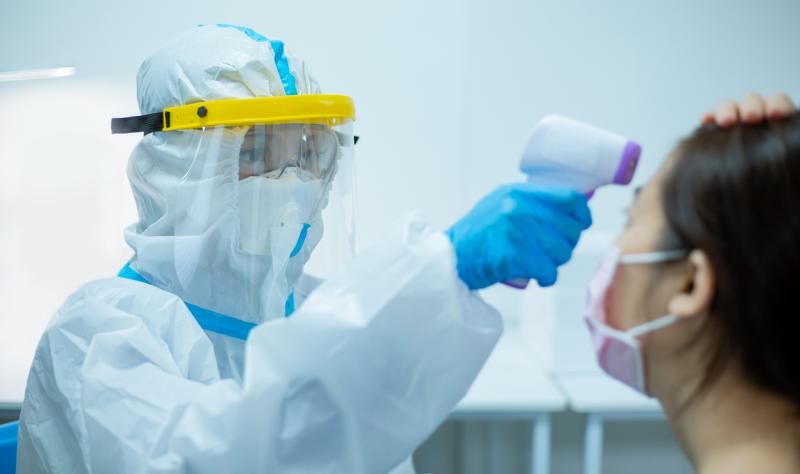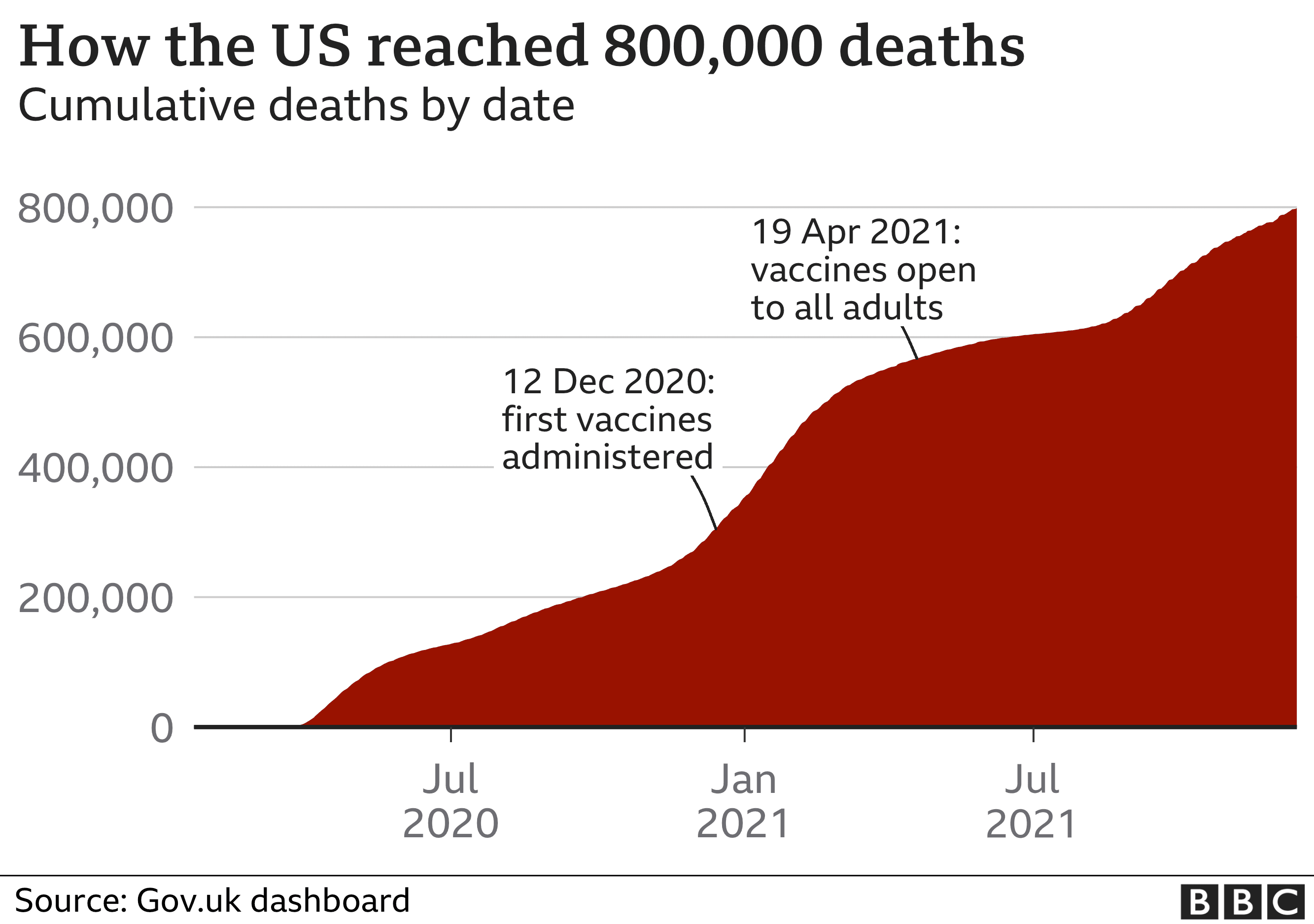COVID in California: Highly contagious BQ.1 variants take off in U.S.


Virus levels at a standstill in U.S.
After seeing great progress over the past two months, COVID-19 community levels in the U.S. have fallen into a holding pattern. Last week, for the first time since April, less than 1% of the American population was living in an area with “high” COVID-19 community levels. But now that number is back at 1.02%, based on hospitalization and case rates, according to updated figures from the Centers for Disease Control and Prevention. The “medium” and “low” tiers also remain unchanged, at 79.51% (compared to 79.05% last week) and 19.43% (compared to 19.95%), respectively. Based on a separate metric that tracks the rates of new cases and positive tests, half of all counties remain in the “high” virus transmission category. In the latter category, all Bay Area counties are considered to be in the “substantial” transmission tier, the second worse out of four.
Highly contagious BQ.1 and BQ.1.1 variants rapidly spreading in U.S.
While the omicron BA.5 subvariant appears to be receding, making up 67.9% of sequenced cases in the U.S. last week, newer strains of the virus are surging, according to data published Friday by the U.S. Centers for Disease Control and Prevention. The emerging subvariants BQ.1 and BQ.1.1 constituted 11.4% of new cases, with a sharp rate of growth that shows them outpacing rivals.
In the United Kingdom, infections from a highly mutated BQ.1.1 have doubled every week, causing a dramatic rise in hospitalizations. In the U.S., the two new subvariants make up nearly four times as many cases as BA.2.75 (1.3%) and have overtaken BF.7 (5.3%), which preceded them by weeks. Additionally, the BQ.1 subvariant — which includes three major mutations on its spike protein — is the first to prove resistant to the available antibody therapies, evusheld and bebtelovimab.
Even though the newest subvariants were detected in the U.S. more than a month ago, the CDC listed them publicly for the first time on Friday in its variant proportion tracker. Health officials say the updated bivalent boosters from Moderna and Pfizer are still effective in preventing the worst outcomes from COVID-19, even for the newer strains.
Three in four high school students experienced a mental health crisis, CDC study shows
Nearly 3 in 4 American high school students reported adverse childhood experiences (ACEs) linked to poor mental health and suicidal behaviors during the COVID-19 pandemic, according to a study published Thursday by the U.S. Centers for Disease Control and Prevention. ACEs are defined as “preventable, potentially traumatic events that occur in childhood” such as neglect, experiencing or witnessing violence, or a change in aspects of a child’s environment that can undermine their sense of safety, stability, and bonding.
The analysis, using data from 4,390 high school students who were monitored between January to June 2021, the 2021 Adolescent Behaviors and Experiences Survey indicate that 37.1% of the adolescents surveyed reported poor mental health during the COVID-19 pandemic, with 19.9% considering and 9% attempting suicide in the preceding year. Nearly three quarters (73.1%) experienced at least one mental issue.
“The magnitude of effect associated with past-year suicide attempts is particularly concerning, given that a 2019 meta-analysis examining the association between having four or more ACEs and attempting suicide was considerably lower, albeit compelling,” the researchers wrote. Those struggling with thoughts of self-harm or suicide can access the confidential online Lifeline Crisis Chat at https://988lifeline.org/chat.
College admission test scores hit a 30-year low
Scores on the ACT college admissions test by this year’s high school graduates hit their lowest point in more than 30 years — the latest evidence of the enormity of learning disruption during the pandemic, according to a report from the Associated Press. The class of 2022’s average ACT composite score was 19.8 out of 36, marking the first time since 1991 that the average score was below 20. What’s more, an increasing number of high school students failed to meet any of the subject-area benchmarks set by the ACT — showing a decline in preparedness for college-level coursework.
The test scores, made public in a report Wednesday, show 42% of ACT-tested graduates in the class of 2022 met none of the subject benchmarks in English, reading, science and math, which are indicators of how well students are expected to perform in corresponding college courses. “The magnitude of the declines this year is particularly alarming,” ACT CEO Janet Godwin said in a statement. “We see rapidly growing numbers of seniors leaving high school without meeting college-readiness benchmarks in any of the subjects we measure.”
Biden administration extends public health emergency
The Biden administration said Thursday that the COVID-19 public health emergency will continue through Jan. 11 as officials brace for a spike in cases this winter, the Associated Press reports. The decision comes as the pandemic has faded from the forefront of many people’s minds. Daily deaths and infections are dropping and people — many of them maskless — are returning to schools, work and grocery stores as normal. The public health emergency, first declared in January 2020 and renewed every 90 days since, enabled the emergency authorization of COVID vaccines, testing and treatments for free. It also expanded Medicaid coverage to millions of people, many of whom who will risk losing that coverage once the emergency ends.
Booster uptake moves ahead at a snail’s pace with 3.3 million shots last week
Nearly 3.3 million Americans received updated COVID-19 booster shots last week, the Centers for Disease Control and Prevention said on Thursday, bringing the total of those who received the shot since it became available six weeks ago to 14.8 million. That figure represents less than 7% of the more than 216.2 million people eligible for the updated vaccines, which the CDC recommends everyone 12 years and older receive at least two months after their last shot. Health officials are depending on robust uptake of the new vaccine to prevent another devastating surge. “Yes, we may see rise in cases,” Dr. Ashish Jha, the White House COVID-19 response coordinator tweeted. “But if folks get their updated vaccine and use tests, treatments, and other tools we can have a safe and healthy fall and winter ahead.”
Lack of data “blinding” WHO to evolution of virus
World Health Organization officials reiterated that they anticipate another winter coronavirus surge at the U.N. health agency’s quarterly Emergency Committee on COVID-19 meeting Thursday. Some countries are already reporting an increase in infections, hospitalizations, and deaths. “We have never been in a better position to end COVID-19 as a global health emergency,” said Tedros Adhanom Ghebreyesus, the director-general of the organization, in his opening remarks. “But our work is not yet finished.” He noted that most countries no longer have COVID-19 mitigation measures in place to limit the spread of the virus and that they have “drastically” reduced their surveillance, testing and sequencing. “This is blinding us to the evolution of the virus and the impact of current and future variants,” he said.
Pfizer releases first human trial results for bivalent boosters
On Thursday, Pfizer and BioNTech released the initial data from their ongoing study of their bivalent COVID-19 booster shots in humans, saying in a press release that the updated formula demonstrated a “substantial” immune response against the omicron BA.4 and BA.5 subvariants. The companies analyzed blood samples from 80 adults one week after they received the new shots for the preliminary results on the effectiveness of boosters, which were given emergency use authorization by the FDA in August without data from human trials. “While we expect more mature immune response data from the clinical trial of our omicron BA.4/BA.5-adapted bivalent vaccine in the coming weeks, we are pleased to see encouraging responses just one week after vaccination in younger and older adults,” Pfizer CEO Albert Bourla said in a statement. The companies will release additional findings on responses at one month “to support potential full licensure and global registration” of the bivalent vaccine.
UCSF’s Wachter predicts a “modest surge” this winter
Dr. Bob Wachter, UCSF’s chief of medicine and prolific tweeter, this week told Axios that he is not terribly concerned about the emerging coronavirus variants U.S. health officials are tracking even though some are “somewhat more immune evasive than BA.5.” He said, “none of them are super scary (because) all of them come from the BA.5 lineage” and that he expected a “modest surge” this winter if enough people get the updated bivalent booster shots. The new formula targets the original coronavirus strain and the dominant BA.4 and BA.5 omicron versions. But Wachter said the virus is known for throwing curveballs, as it did last December shortly before the biggest surge of the pandemic, so anything is possible. “There was nobody who predicted omicron a month before omicron,” he said.
State virus trends stall for the third consecutive week
California’s COVID-19 numbers made little progress in the past week. The state is tracking about 8.2 new daily cases per 100,000 residents as of Thursday, down from 8.3 per 100,000 a week ago, according to health department data. The statewide test-positive rate also remains unchanged at 4.7%. But the case numbers may be misleading with the number of coronavirus tests performed across the state falling steeply, with the official sites administering fewer than 30,000 tests daily — the lowest number since April 2020. By comparison, in January, state sites administered more than 834,000 coronavirus tests per day. California is still tallying a death toll of 19 people each day due to the virus, and there are 1,746 patients hospitalized with COVID-19, a modest decrease from the 1,800 admissions recorded at the beginning of the month.















